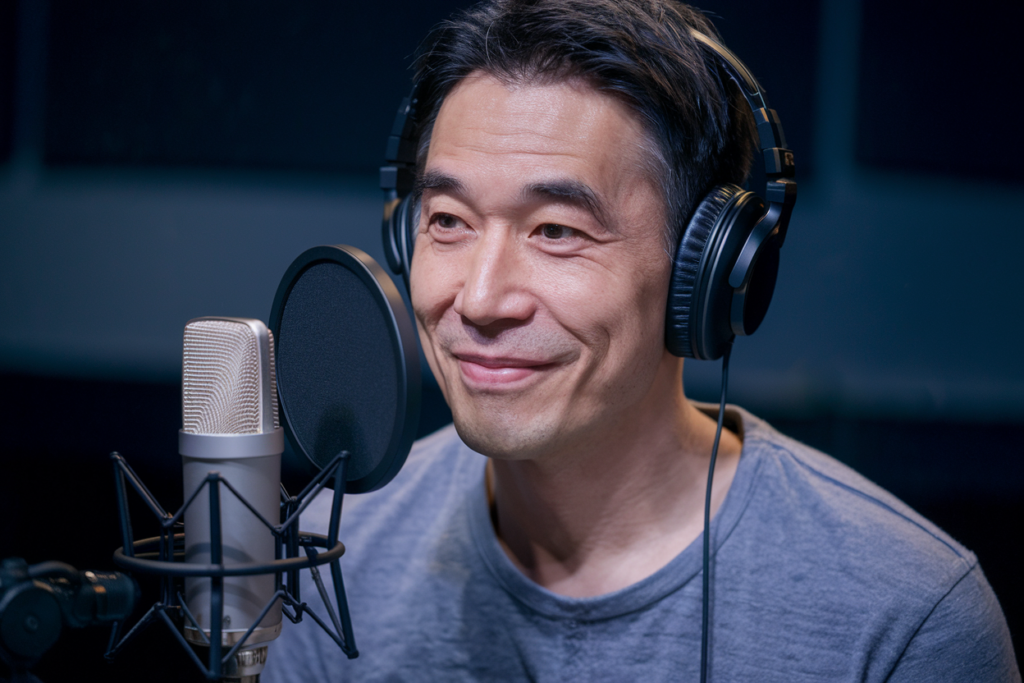Key Takeaways
- Cultural Sensitivity: Understanding Japanese culture and consumer behavior is essential for effective video localization, as it influences how content resonates with audiences.
- Language Translation: Proper translation involves more than just converting words; it requires capturing the essence of the message while ensuring cultural relevance through professional voiceover talent.
- Visual Adaptation: Tailoring visuals to align with Japanese aesthetics and cultural symbols enhances audience engagement, making every detail crucial in presenting a relatable narrative.
- Subtitling vs. Dubbing: Choosing between subtitling and dubbing depends on the content’s emotional delivery; dubbing may provide a more immersive experience for nuanced dialogue.
- Engaging Local Talent: Utilizing local voice actors familiar with cultural nuances adds authenticity to your videos, enhancing relatability and connection with viewers.
- Leveraging Tools & Resources: Effective localization relies on using the right software solutions, professional services, and market research to ensure high-quality production that resonates well within the Japanese market.
Ever wondered why some videos just don’t hit the mark in Japan? Localizing video for the Japanese market isn’t just about translation; it’s about crafting an experience that resonates with local audiences. With a unique culture and distinct preferences, understanding how to tailor your content can make all the difference.
Understanding The Japanese Market
Understanding the Japanese market involves recognizing its unique cultural and consumer dynamics. Grasping these elements significantly enhances your video localization efforts.
Cultural Nuances
Japan’s culture is rich and complex, steeped in traditions that influence everyday life. Respect plays a vital role in communication; therefore, content should reflect this cultural sensitivity. Consider incorporating local idioms or expressions to resonate with viewers. Humor often differs from Western styles, so what’s funny elsewhere might not translate well here. Engaging a voiceover artist familiar with Japanese culture can help deliver messages authentically, ensuring that tone and context align seamlessly.
Consumer Behavior
Japanese consumers exhibit distinct preferences shaped by their values and lifestyle choices. Quality and attention to detail are paramount; they expect products that embody excellence. When localizing videos, emphasize how your offering meets these expectations while also connecting emotionally with audiences. Additionally, digital media consumption trends reveal a strong inclination toward visual storytelling combined with compelling voiceovers—providing an immersive experience captures attention effectively. Tailor your message to fit their tastes, leveraging insights about age demographics or regional differences for targeted marketing strategies.
Key Considerations In Video Localization
When localizing video content for the Japanese market, several key factors come into play that can significantly impact how your message resonates. Understanding these nuances helps create a more engaging experience for viewers.
Language Translation
Language translation goes beyond merely converting words from one language to another. It involves capturing the essence of your message while ensuring cultural relevance. Professional voiceover talent familiar with Japanese dialects and colloquialisms plays an essential role in this process. They can provide accurate translations that sound natural and fluent, enhancing relatability. You might want to consider working with native speakers who understand regional variations, as this attention to detail elevates the overall quality of your video.
Adaptation Of Visuals
Adapting visuals is just as crucial as language translation in video localization. Certain imagery or symbols may not hold the same significance in Japan as they do elsewhere. Ensure that all visuals resonate with local audiences by aligning them with cultural values and preferences. This might mean altering colors, graphics, or even character representations to fit Japanese aesthetics better. Additionally, incorporating localized elements—like popular landmarks or traditional attire—creates a stronger connection with viewers. Always remember: every detail counts when it comes to presenting a culturally relevant visual narrative that engages your audience effectively.
Techniques For Effective Localization
Localization involves more than just translation; it’s about creating a culturally relevant experience for the Japanese audience. Here are some key techniques to consider.
Subtitling vs. Dubbing
When localizing video content, you often face a choice between subtitling and dubbing. Subtitling can be less intrusive, allowing viewers to engage with original performances while reading translations. However, if your content relies heavily on emotional delivery or nuanced dialogue, dubbing offers a better solution. Professional voiceover talent skilled in Japanese dialects ensures that the emotional tone aligns perfectly with what’s being said on-screen. It creates an immersive experience that resonates deeply with the audience.
Engaging Local Talent
Engaging local talent is essential for effective localization. Collaborating with voice actors who understand cultural nuances adds authenticity to your project. These artists bring not only their vocal skills but also an intrinsic understanding of local idioms and expressions that enhance relatability. Whether choosing a voiceover artist for narration or character roles, selecting someone familiar with regional variations helps connect your message meaningfully with viewers in Japan.
By implementing these techniques, you ensure that your localized videos resonate well within the Japanese market while maintaining high standards of quality and engagement.
Tools And Resources
When localizing video for the Japanese market, having the right tools and resources makes a significant difference. These tools enhance quality and streamline your workflow, ensuring your content resonates.
Software Solutions
- Localization Platforms: Great software options exist for managing localization projects efficiently. Look into platforms that support collaboration among teams, allowing easy updates and adjustments to scripts and subtitles.
- Editing Software: Video editing software plays a crucial role in integrating voiceovers seamlessly into your videos. Choose tools that allow precise synchronization of audio with visuals.
- Subtitle Generators: Subtitle generators can save time by automating the creation of translated subtitles based on original scripts. Ensure these tools support multiple formats suitable for various platforms.
- Audio Editing Tools: High-quality audio is vital when incorporating voice talent into your videos. Use audio editing software to refine voice recordings, adjust levels, and eliminate background noise.
- Transcription Services: Consider transcription services to convert spoken language into text accurately before translation begins. This step ensures you capture all nuances of the original content.
Professional Services
- Voiceover Talent Agencies: Collaborate with agencies specializing in Japanese voiceover talent who understand cultural subtleties and dialects specific to different regions in Japan.
- Translation Services: Work with professional translators familiar with both English and Japanese cultures to ensure accuracy in translations while maintaining contextual relevance.
- Dubbing Specialists: Hiring dubbing specialists can provide an immersive experience for viewers by matching voiceovers perfectly to character movements, enhancing emotional impact.
- Cultural Consultants: Utilize cultural consultants who offer insights on local preferences, idioms, and traditions that enrich your video’s authenticity among Japanese audiences.
- Market Research Firms: Engage firms that focus on audience analysis within Japan’s digital landscape; they’ll help tailor strategies specific to demographics or regional interests for targeted marketing efforts.
By leveraging these tools and resources effectively, you can create compelling localized videos that connect deeply with Japanese audiences while maintaining high standards of quality throughout your production process.
Conclusion
Localizing video for the Japanese market is a strategic move that can significantly enhance your connection with local audiences. By understanding cultural nuances and preferences you’ll create an experience that resonates deeply. Prioritizing quality and emotional engagement will set your content apart.
Utilizing professional services and tools ensures a polished final product that speaks directly to viewers in Japan. Whether you choose subtitling or dubbing each approach has its own benefits that can elevate the viewer’s experience.
Embrace this opportunity to connect authentically and watch as your localized videos thrive in the Japanese market. The effort you put into localization today will pay off with stronger audience relationships tomorrow.
Frequently Asked Questions
Why is video localization important for the Japanese market?
Video localization is crucial for the Japanese market because it goes beyond simple translation. It involves creating content that resonates with local audiences by considering Japan’s unique culture, preferences, and communication styles. This ensures that messages are relayed effectively and connects emotionally with viewers.
What role do cultural nuances play in video localization?
Cultural nuances are essential in video localization as they influence how messages are interpreted. Understanding these subtleties helps creators avoid miscommunication and enhances relatability by incorporating local idioms, values, and imagery that align with Japanese consumers’ expectations.
Should I use subtitles or dubbing for my localized videos?
The choice between subtitles and dubbing depends on your content type. Subtitles allow viewers to appreciate original performances while reading translations, whereas dubbing offers a more immersive experience by matching voices to characters, which can be vital for emotional storytelling.
How can I ensure quality in my localized videos?
To ensure high quality in localized videos, engage professional voiceover talent familiar with Japanese dialects and cultural nuances. Additionally, adapt visuals to align with local values and preferences while using reliable tools for project management and audio editing.
What tools are necessary for effective video localization?
Key tools for effective video localization include localization platforms for project management, video editing software for seamless integration of voiceovers, subtitle generators for automation, and high-quality audio editing tools. Collaborating with professionals also enhances authenticity.
How can I connect emotionally with Japanese audiences through videos?
To connect emotionally with Japanese audiences, focus on storytelling techniques that resonate culturally. Incorporate relatable themes and visuals while employing skilled voice actors who understand the emotional delivery needed to engage viewers deeply.







